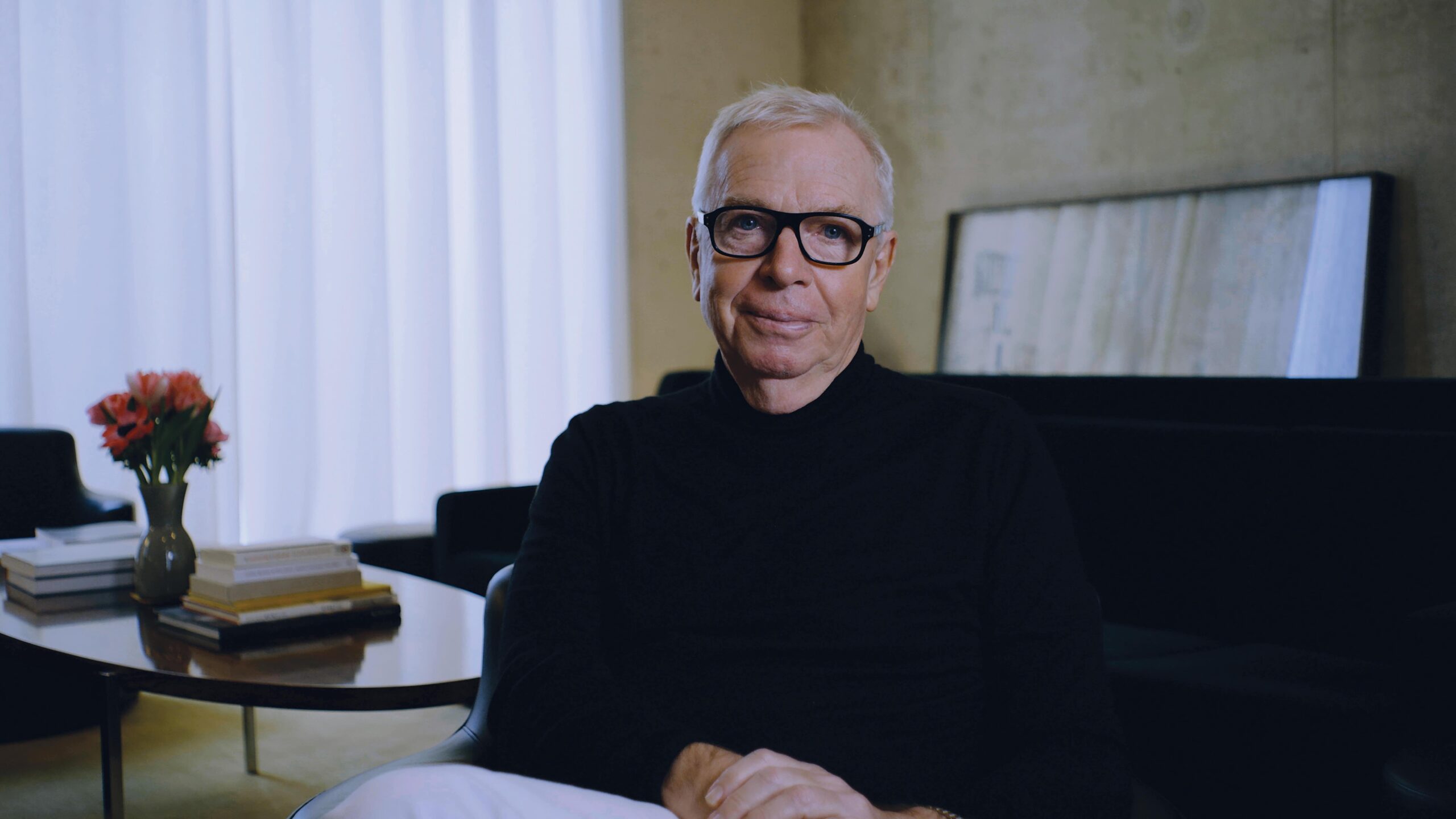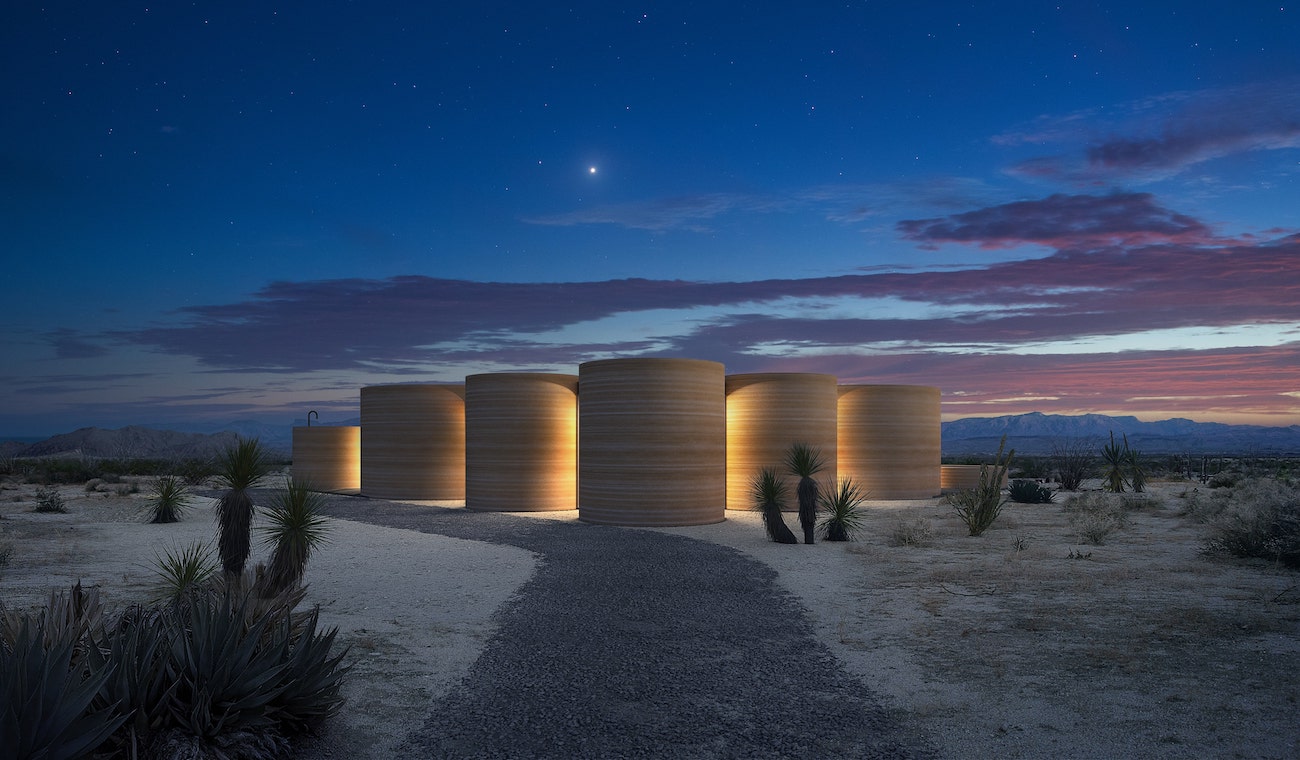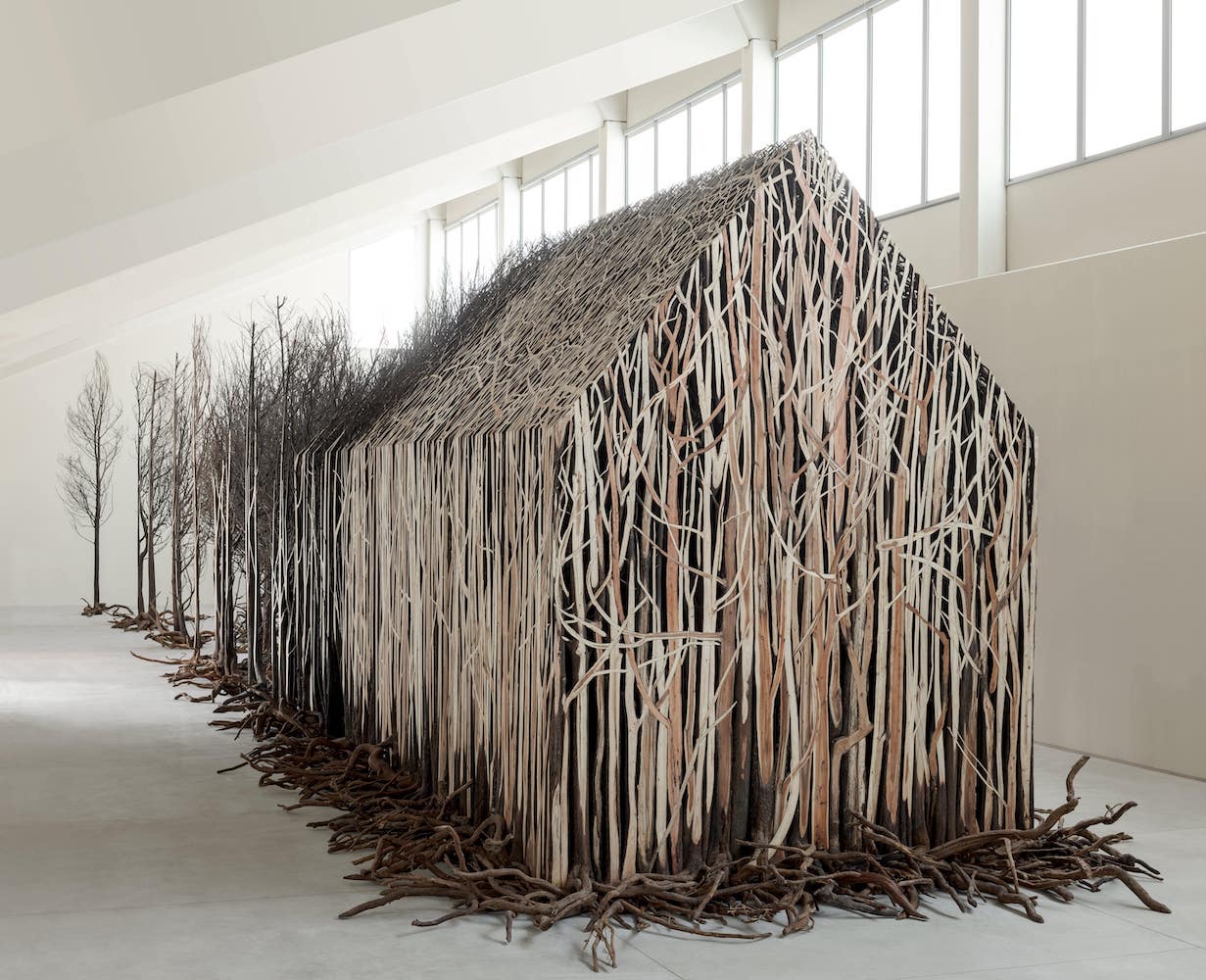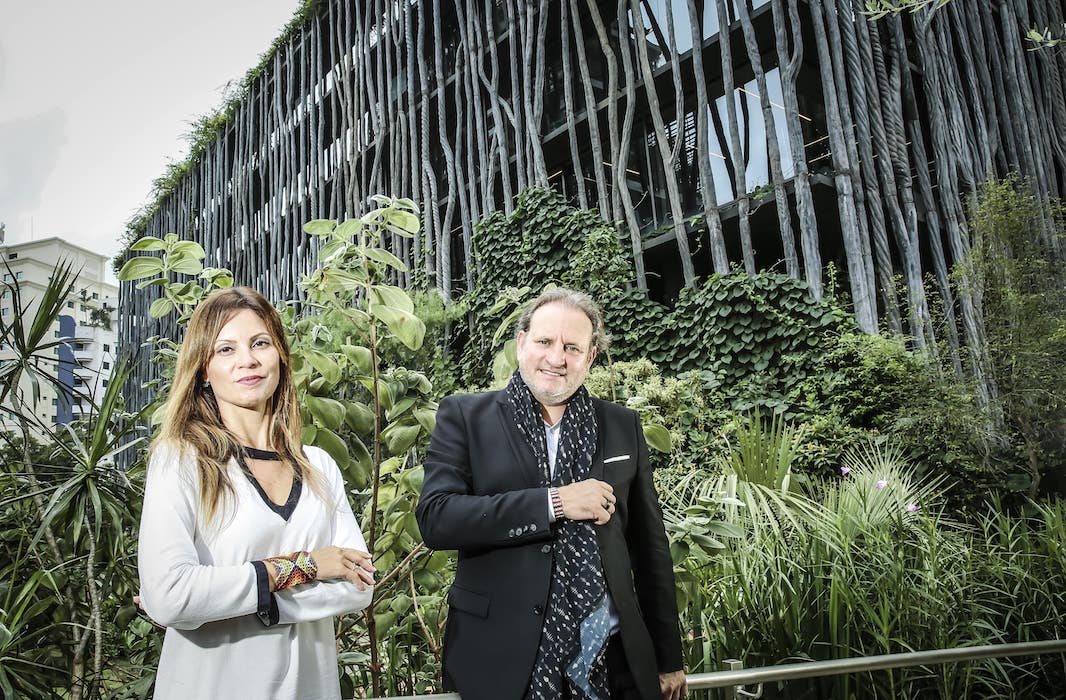David Chipperfield Looks at Architecture in the Face of Social Inequality and the Climate Crisis
In March, David Chipperfield was named the 2023 Laureate of the Pritzker Architecture Prize, receiving the architecture field’s arguably highest honor. The architect known for the America’s Cup Building in Valencia, the Turner Contemporary gallery in Margate, and the Museo Jumex in Mexico City took the announcement as an opportunity to emphasize the need for architecture to address social inequality and sustainability. He encouraged the next generation of architects to forge their own path, one that will need “vision and courage.”
After he established his eponymous firm in London in 1985, Chipperfield’s first designs were in Japan. Beginning his career as an outsider in a culture different from his own informed his approach over the next nearly forty years—across continents and more than a hundred projects—establishing a method that addressed site-specificity rather than a signature style.
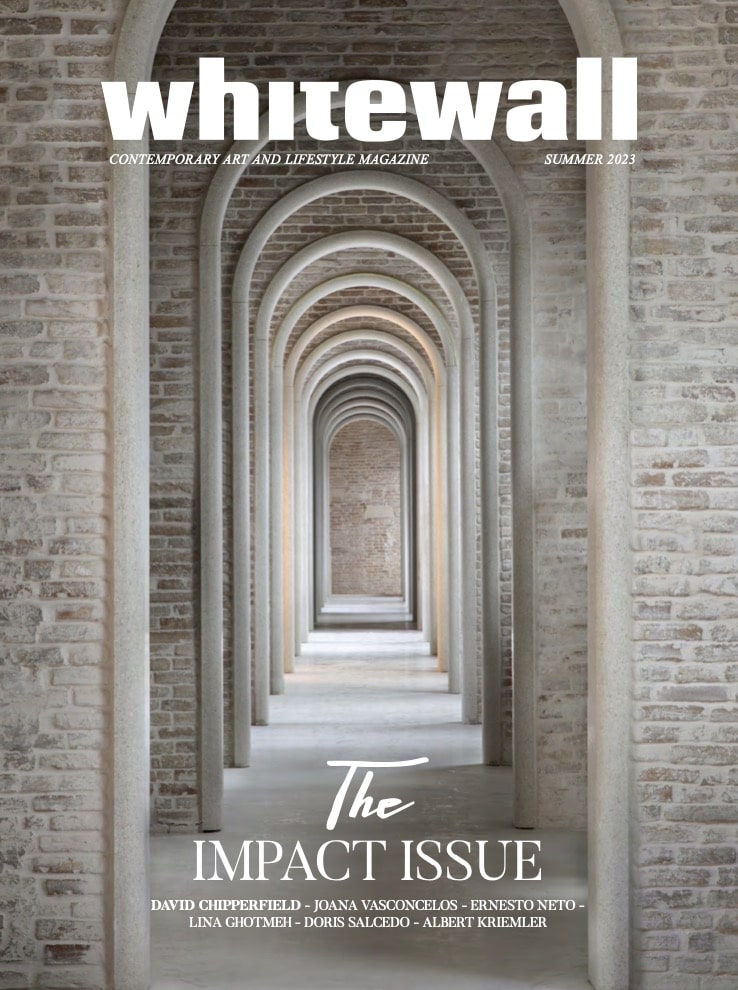
Procuratie Vecchie, photo courtesy of Alberto Parise, courtesy of the Pritzker Architecture Prize.
Now with offices in London, Berlin, Milan, and Shanghai, Chipperfield still firmly believes in architecture’s promise of enhancing quality of life. And given our current climate crisis, that means rethinking if something even needs to be built at all. Recognizing that architects indeed play a part in the major carbon footprint of the construction industry, tougher questions need to be asked, and the driving force should be one that’s ethical rather than economic and in service of the market.
He cites his renovation of sites like the Procuratie Vecchie in Venice and the Neues Museum in Berlin as examples of reusing existing spaces to not only make them more efficient but maintain a sense of identity for a community. Chipperfield argues that when a balance is struck between natural and built environments, the resulting spaces are beneficial to our welfare now and in the future.
“I still firmly believe in the positive impact that architecture can have on quality of life.”—David Chipperfield
Chipperfield’s dedication to a sustainable and equitable future takes root in a project in the Galicia region of Spain. He had a personal relationship to the area initially, and his firm was asked in 2015 to conduct an architectural study of abandoned buildings in Ría de Arousa’s town centers. He soon realized that location was a microcosm of the current social, economic, and environmental concerns. Chipperfield founded Fundación RIA in 2017 as a nonprofit focused on the development and protection of the local economy and environment.
Whitewall spoke with Chipperfield after he received the news of the Pritzker Prize, keen to learn more about his message to young architects, the findings from his foundation, and his optimism about the future of his profession.
WHITEWALL: Congratulations on being awarded the 2023 Pritzker Architecture Prize! In response to the announcement, you said, “I take this award as an encouragement to continue to direct my attention not only to the substance of architecture and its meaning but also to the contribution that we can make as architects to address the existential challenges of climate change and societal inequality.” Would you say that addressing these two issues—climate change and societal inequality—are central to not only your role as an architect, but should be for all architects?
DAVID CHIPPERFIELD: Absolutely. We must recognize that, as architects, we are part of the construction industry, which is responsible for nearly 40 percent of carbon emissions. With this in mind, it is clear that we need a more coordinated framework of regulations to ensure that we build more responsibly, so we must advocate for the importance of good planning, which will mediate market interests with the fundamental concerns of the environment and society.
On a more practical level, I think architects can play a role in coordinating such discussions and also in making more responsible decisions with their projects. It will require us to place a greater emphasis on process, as the answer is not always to build.
WW: You also stated, “We must rise to this challenge and help inspire the next generation to embrace this responsibility with vision and courage.” I was struck by this word, “courage.” Why is that a key component to taking on this challenge, in addition to having a vision for the future?
DC: It requires courage because the current generation has to recognize that our approach to practice isn’t working. The ways in which we evaluate success and credibility within the profession need to be redefined. I appreciate that this may sound strange in the context of having just won an award myself, but we must recognize that architecture is—and must be—far more than novelty and formal gestures in the service of the commercial market.
I think attitudes are definitely changing. We are more aware of our responsibilities both as professionals providing a service and as consumers. It is clear that we need to find a better balance between the natural and built environment, and that this balance is fundamental to promoting quality of life. So many of these issues align together when we focus on the mission to protect quality of life rather than the endless pursuit of economic growth.
WW: How do you see architects as uniquely suited to taking on not just the issue of climate change but social inequality?
DC: I see that we as architects are able to consider issues as a range of scales, to understand and coordinate information and establish frameworks for dialogue. I also think that our belief in the role that our physical environment impacts our quality of life helps to give focus to both environmental and social issues.
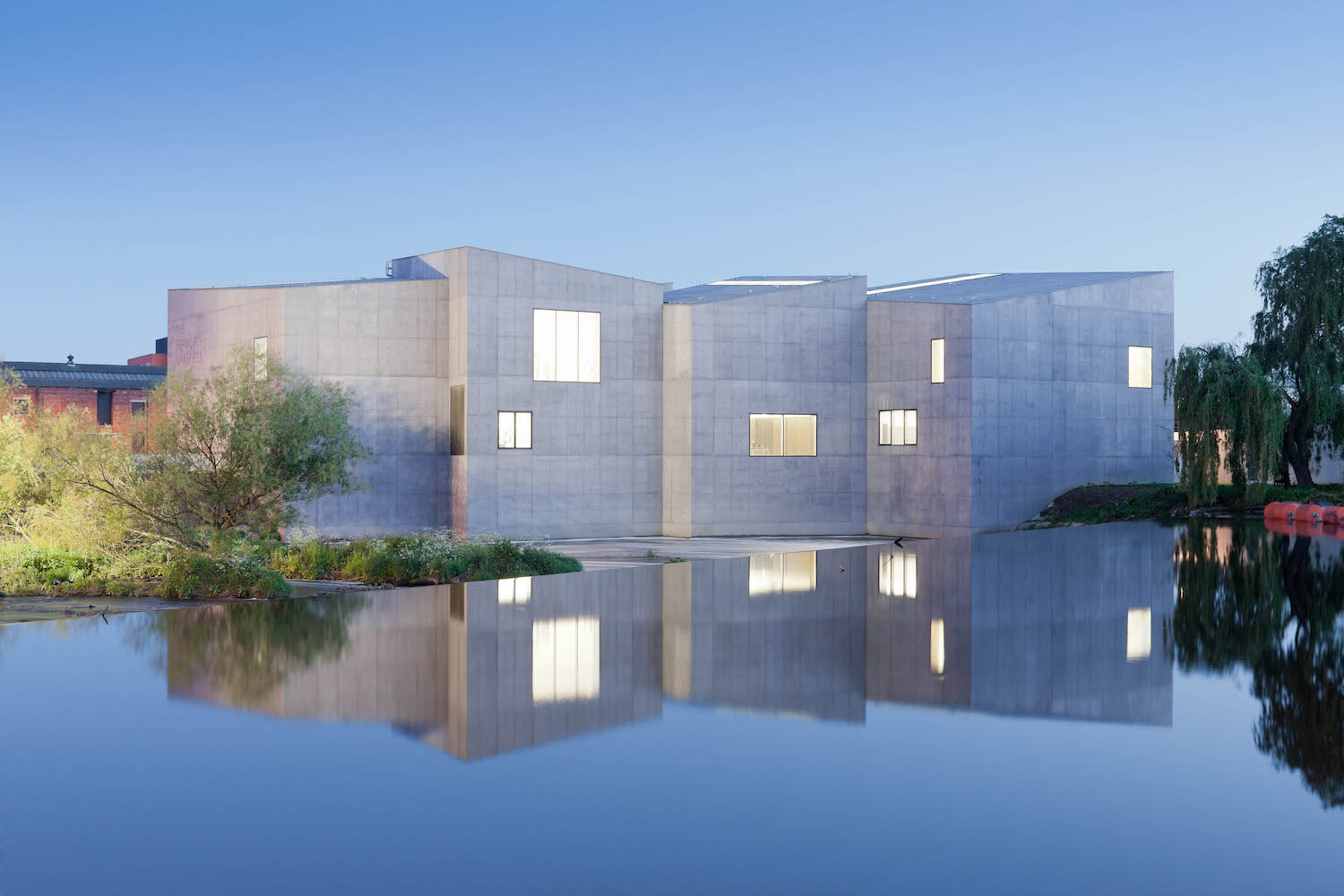
The Hepworth Wakefield, photo courtesy of Iwan Baan, courtesy of the Pritzker Architecture Prize.
WW: You’ve described how you came from a generation of architects that believed that housing was a right, but that idea was abandoned. How can we work to right that shift, to get back to the fundamentals of housing as a civil right?
DC: In the U.K., we lost confidence in planning in the 1970s, and since then the market has been the driving force behind our built environment. Administrations are not sufficiently resourced to counteract this, and regulations have been removed. Profit and financial growth are considered a cause worth pursuing regardless of the consequences, leaving little concern for civic qualities, public space, and the relationship with nature. Reinvesting in good planning process is critical to ensuring that we protect quality of life for everyone.
“Ultimately, we know that we must find a way to create projects that are more in balance with nature and community.”—David Chipperfield
WW: You founded Fundación RIA in the Galicia region of Spain, which is a nonprofit focused on the development and protection of the local economy and environment. What was your initial vision for this foundation? What prompted its founding?
DC: Having developed a strong personal connection to Galicia over nearly three decades, I was invited in 2015 to conduct an architectural study into abandoned buildings in the town centers of Ría de Arousa. It soon became clear that the state of the built environment is a manifestation of the challenges communities are facing, so we took on a deeper investigation that extended beyond the conventional boundaries of architectural practice. We know that a lasting solution for this architectural issue requires a deeper understanding of ecology and economy, and the collective involvement of local communities, businesses, industries, and governments. So we established Fundacion RIA in 2017, and since then we have conducted research and pilot projects into issues such as mobility, procurement processes, land management, and governance.
WW: What potential did you see in the region of Galicia for creating a truly sustainable way of life, where the economy and environment are aligned? What makes Galicia, as you recently described in an editorial in La Voz de Galicia, a “land of opportunity”?
DC: Many of the challenges faced by this corner of Spain are shared by communities and regions across Europe and beyond, but I feel in Galicia, the presence of nature and its economic and cultural importance are more explicit than we might find elsewhere. Here we see a very vivid demonstration of the impact of the industry and the built environment on the erosion of environmental quality and weakening of community, and we also see so much potential to build a sustainable future, centered on quality of life and a circular economy. I am hugely excited by the example that Galicia can set in this regard.
WW: While architects play a fundamental role in the issue of climate change and societal inequity, you have often spoken about how architects are often the last to come in on a system that’s fundamentally at odds with the betterment of both—if no one is thoughtfully considering urban planning, for instance, or seeking to build public housing, the architect can’t build public housing. That the role of the architect needs to be to get back into those early, initial conversations, not just the design of the object. Is Galicia that chance to get in at the foundational level?
DC: Yes, very much so. Working within the community over the last six years, the Fundación RIA team has first developed a strong understanding of their concerns and ambitions. We have also established connections with local industries, administrations, and planning bodies, as well as experts and academic institutions, in order to ensure a rigorous understanding of the issues impacting quality of life across this region. This gives us credibility and a solid foundation for our current work with the regional government on establishing a coordinated strategy. As trained architects and planners, we feel we can play a critical role by bringing together politicians, administrators, communities around a common purpose: to protect and encourage the quality of our natural and built environments.
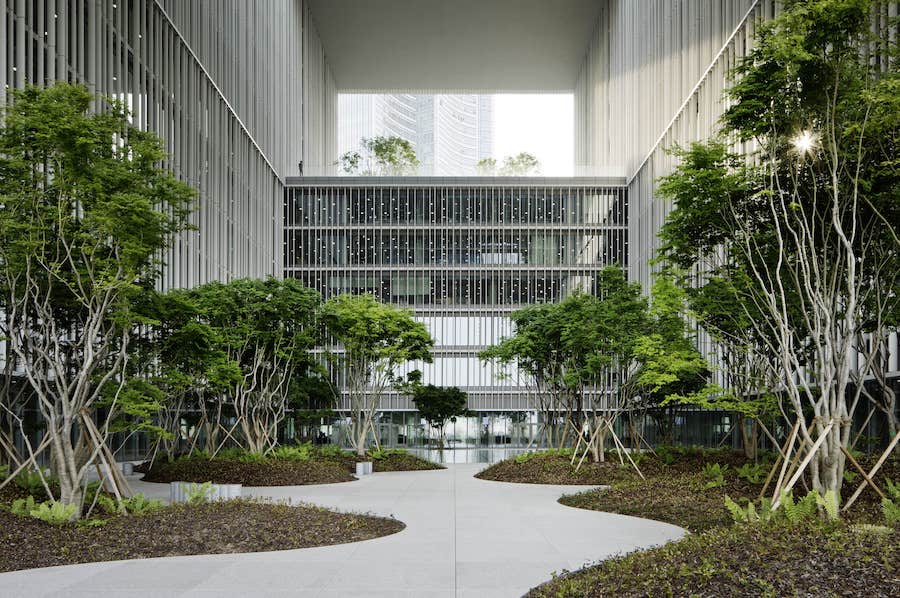
Amorepacific Headquarters, courtesy of David Chipperfield.
WW: Do you see the research and mission of Fundación RIA as something that can be applied elsewhere? And if so, where and how?
DC: Through Fundación RIA, we are looking to connect the details of localized issues with territorial planning and national commitments. The work of the team is assisting the flow of information between scales of governance to ensure that the impacts of strategies and policies are considered and understood. RIA has focused its activity on three key areas: promoting sustainable land management; supporting territorial planning and protecting local identity; and lastly, establishing strong planning and procurement processes to ensure design quality. I think this can be applied to many contexts, particularly in other more rural regions across Europe. The key is to rethink the conventional boundaries of regions, disciplines, departments to create a coordinated vision and plan to achieve it.
WW: How has your involvement with the region of Galicia, and what you’ve learned in working on Fundacion RIA, impacted your practice and efforts elsewhere? Are there lessons there for you that can be applied to what your offices are doing in London, Berlin, Milan, and Shanghai?
DC: Yes. It is making all the offices more aware of the evolving role of the architect, and as a practice we are collectively reassessing what “good architecture” means. We increasingly start a project by questioning whether it is necessary to build at all, and pay particular attention to the purpose of a project and the impact it will have on its context. We are also increasingly conscious of the efficient and responsible use of existing resources, such as reusing existing buildings and materials. Ultimately, we know that we must find a way to create projects that are more in balance with nature and community.
WW: You’ve worked on a number of restoration projects, like Procuratie Vecchie in Venice and the Neues Museum in Berlin. What draws you to projects like these?
DC: The reconstruction of the ruined Neues Museum in Berlin was perhaps the most complex project but also one of the most satisfying. We were dealing with a building that carried so much meaning in a city that has a very complicated history. We had to create a robust process that considered a range of opinions, and we had to coordinate a team with many diverse skills and expertise. The experience had a profound impact on the way we now approach all projects.
Similarly, our work on the Procuratie Vecchie project also required a very robust process rather than fixed formal ideas of the outcome. Certainly there is a great sense of responsibility working with precious heritage, but everyone involved shares a common ambition from the outset, so the discussions around the project become very interesting. In the case of the Procuratie Vecchie, it wasn’t only a discussion about how to deal with the fabric, but also how to revive the center of Venice as a place of work, as a living city rather than a tourist destination.
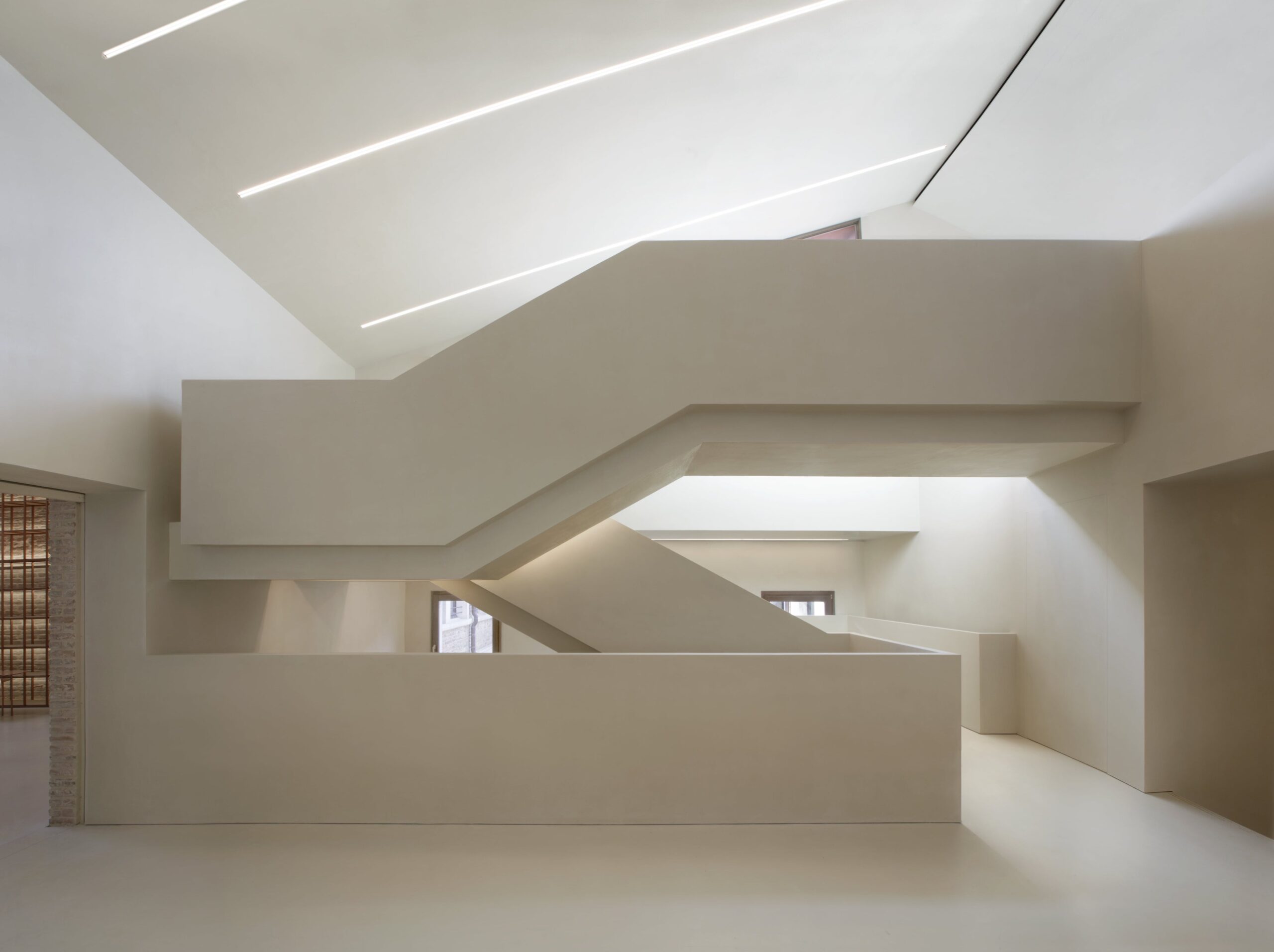
Procuratie Vecchie, photo courtesy of Alberto Parise, courtesy of the Pritzker Architecture Prize.
WW: How can the restoration of historic buildings, working with what we already have, the histories there, rethinking tearing something old down to build something entirely new, be better folded into the conversation around sustainability in architecture?
DC: I think we have to have a better understanding of how things are deeply interconnected and often closely aligned. It helps if we focus on a core idea: promoting quality of life rather than the endless pursuit of economic growth. We know that we need our natural environment and social environments to be healthy if we are to live well. Reusing buildings, for example, is not only a question of making more efficient use of resources and avoiding unnecessary emissions, it is also about preserving a sense of a place and identity for a community.
WW: You’ve said, “I’ve spent a lot of my life building in other people’s cultures. That puts a heightened sense of responsibility on the architect.” Do you think that approach of care and respect as someone outside of a culture has better prepared your practice to take on issues of sustainability and equity?
DC: I think it has made us very conscious of the contexts in which we work and the need to explain our process clearly. We never assume we have the right to impose our ideas on a place. Instead, we look for the unique opportunities that a site and its context present. Ultimately, we want a project to belong to a place more than to our own portfolio. In many ways, that makes it easier to integrate issues of sustainability and equity into a design process, because we are not fixed in our approach.
WW: You sponsored the 2023 People’s Pavilion this year, supporting the winning team that was recently announced—Roots of Heritage. The design competition engages 14- to 18-year-olds in East London to work collaboratively. What about this project compelled you to get involved?
DC: Supporting the People’s Pavilion (an initiative by Beyond the Box) is part of our wider commitment to championing inclusion, diversity, equality, and accessibility in the architecture profession. The appeal of being involved with the People’s Pavilion specifically was that it enables our office to engage with young people in a collaborative and practical way. Through the process of the competition, three young designers and architects (Bruno De Marco, Tomi Balogun, and Zhané Phillips, who have formed the Cultural Maze team) have gained firsthand experience of the process of designing and making in the studio through workshops guided by our architects. We have gained a lot from the process as well, and we’re delighted that their project has been selected to be built during the summer.
“The existential issues of climate crisis and social inequality have made the current way of practicing and evaluating architecture increasingly irrelevant.”—David Chipperfield
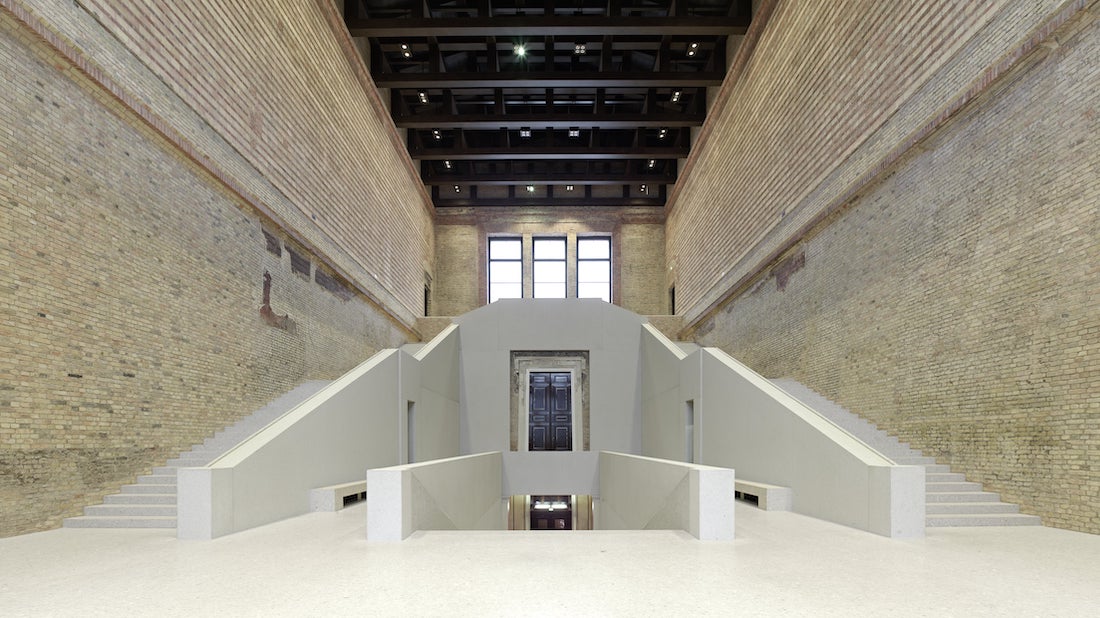
The Neues Museum, 2009, Berlin, Germany, photo by Joerg von Bruchhausen, courtesy of SPK / David Chipperfield Architects.
WW: What role do you want to play in engaging and encouraging this next generation of architects to address climate change? You’ve talked about the struggle of architects starting out with idealism and energy, but as they are just beginning, no reach. How can architects of influence, like yourself, work with this next generation of architects, who have much smaller footprints and aren’t yet being asked to work on projects of greater impact?
DC: I think one of the key points is to make it clear that they should not follow the same path as my generation of architects. The existential issues of climate crisis and social inequality have made the current way of practicing and evaluating architecture increasingly irrelevant. The new generation has a role to play in establishing a form of practice that places greater emphasis on process rather than a built outcome, accepting that the decision not to build and the engagement with the wider processes that shape the built environment is also architectural practice.
WW: What keeps you optimistic about the role of the architect?
DC: First of all, I still firmly believe in the positive impact that architecture can have on quality of life. In other words, that the spaces we live in and around play a role in enhancing our experience of life, our interactions and our connections to places and to each other. Secondly, I think that our profession must expand its role into the processes that mediate ideas, priorities, and concerns that inform the shape of the built environment.
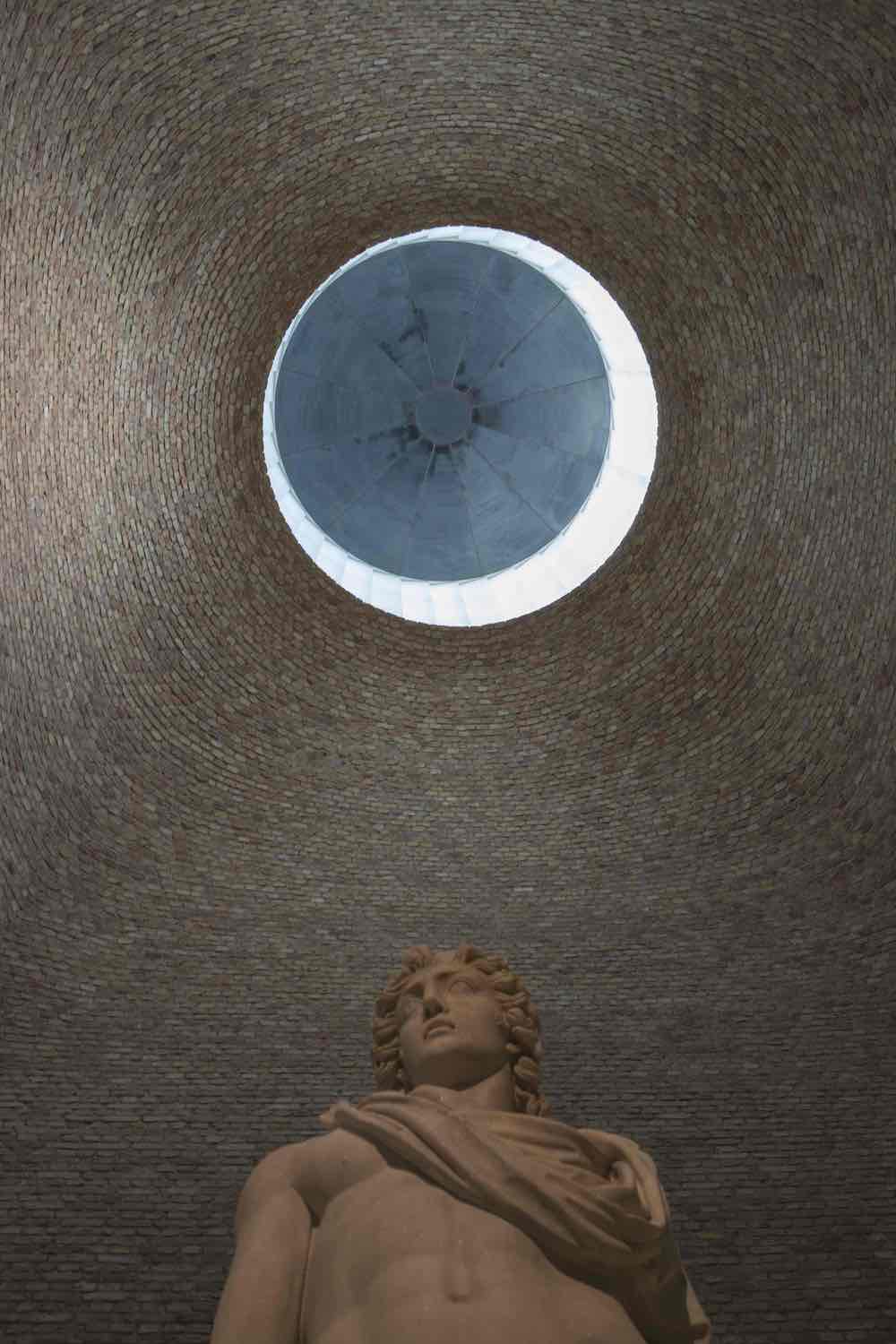
The Neues Museum, 2009, Berlin, Germany, photo by Bartosz Haduch, courtesy of SPK / David Chipperfield Architects.


